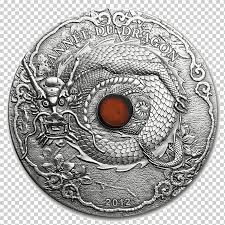Introduction:
The little, sometimes disregarded jewels of human civilization, coins, have been crucial in determining the path of history. Coins are more than just useful tools for exchanging money; they are beautiful paintings that capture the essence, aesthetics, and cultural diversity of many nations. The universe of beautiful coins is examined in this article, along with their aesthetic appeal and the fascinating histories they have that span many eras and civilizations.
The Artistic Symphony:
Coins have always been artistically expressive, from the first known coins found in Lydia about 600 BCE to the current minting methods. These little works of art exhibit astounding craftsmanship, with elaborate patterns and minute details that showcase the engravers’ talent and imagination. Each coin’s visual components, whether they depict the portraits of monarchs, legendary characters, or culturally significant symbols, convey a different tale.
The Classical Elegance:
Greek and Roman coins are prized for their classical beauty. The tetradrachms of Alexander the Great, which show the conqueror with heavenly traits, and the drachmas of Athens, which include the famous owl of Athena, represent the elegance and refinement of Hellenistic numismatics. In addition to being tools of trade, these coins also functioned as propaganda tools, perpetuating the values and accomplishments of the societies in which they were used.
The Golden Splendor:
The practice of fusing art with money was carried on by the Byzantine Empire with its magnificent gold coins. Emperor Constantine established the solidus, a gold coin with elaborate Christian imagery that represented the union of imperial and religious power. These coins’ exquisite workmanship and brilliant brilliance inspire a feeling of Byzantine majesty, highlighting the value of gold as a symbol of authority and status.


Islamic Ingenuity:
Islamic coins exhibit a distinctive fusion of geometric designs and writing, especially those from the Abbasid and Umayyad Caliphates. Arabic script turns becomes a medium for creative expression; it is used to engrave poetic inscriptions that exalt the caliphate and Quranic passages on coinage. The respect that the Islamic world has for the written word and its incorporation into the visual arts is demonstrated by these coins.
Renaissance Revival:
Both classical themes and numismatic art had a resurgence during the Renaissance. Italian city-states, including Florence and Venice, created beautiful coins with images of powerful figures and symbolic depictions of civic values. The Medici florin, with the family crest adorning it, is a prime example of the Renaissance’s exaltation of individual success and humanism.
Colonial Coinage:
Colonial coinage became an interesting crossroads of cultures as European nations grew their empires. Spanish colonial coins, dubbed “pieces of eight,” had elaborate patterns that drew inspiration from native art. The intricate interaction of civilizations throughout the era of discovery is shown in the blending of European and indigenous designs on these coins.
Modern Masterpieces:
Modern minting technology have made it possible to achieve previously unheard-of levels of creative intricacy and perfection in the modern period. Commemorative coins honor notable individuals, historical occurrences, and cultural achievements from many nations. Among the coins that demonstrate the fusion of cutting-edge engraving methods with artistic inventiveness are the Chinese Panda, the American Eagle, and the Canadian Maple Leaf. These coins are not only useful as money pieces but also desirable pieces of art.


Conclusion:
Because of their timeless beauty, coins transcend their practical use and become priceless objects that capture the spirit of human civilization. Every coin represents a chapter in the vast story of our common history, from the classical beauty of ancient Greece to the sumptuous majesty of Byzantium, the Islamic world’s calligraphic inventiveness, the Renaissance rebirth, colonial connections, and the contemporary wonders of today. Through the prism of these exquisite coins, we are able to see the complex cultural, political, and artistic fabric that characterizes our world history in addition to the historical economic transactions.





